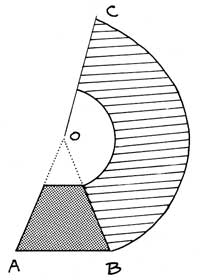The Complete Metalsmith
How to work metal
I’ve spied this book in the cluttered workshops of many amateur craftsmen, and it is frequently nominated as the best all-around introduction to light metal work. If you take an entry class in jewelry, this is often the manual. (Complete in this case does not include welding or blacksmithing; this guide is best for metal projects smaller than a bowl.). The reason I like this manual is that it is quick, succinct, clear, and dense — sort of like metal itself. The author assumes you wield a certain level of handiness, and that you can kind of figure out things yourself if you get a general sketch of what needs to be done. It shows you with simple drawings (no fancy photos here) things you might want to do with small bits of metal — different methods of shaping it, different textures or patinas to coat it with, ways to cast it in molds, how to set stones in it, what metals to even use. In other words, it’s a quick tour of metal work possibilities. It also lays flat on the table with its thoughtful metal spiral binding. Be sure to get the revised edition.*
There is something especially exciting about making a flexible object from rigid material. Chainmaking offers technical challenges and an enormous range of design possibilities.

*

Making a Cone Pattern
1. Draw the side view of the cone exactly as you want it.
2. If making a frustrum (shaded), extend lines to meet at o.
3. Set compass with radius ob and draw arc.
4. Multiply ab times pi (3.14). Mark this distance on the arc with a wire or string to find c.
5. Connect oc. The striped area is the pattern.
Excerpt
Drawing Wire
This simple tool will allow a craftsman to create the thickness and cross section of a wire as it is needed. It is an example of a tool whose shape and function has no changed since its invention 500 years ago.
The plate is held in a vise so it is well supported.
If a vise is not available, hold the draw-plate on a board with a hole in it, braced across your door jamb. Native American silversmiths used to anchor their plates against pegs in the ground.
*
As anyone blessed with bronze babyshoes knows, it is possible to eletroform over nonmetallic objects. The only requirement is a coating of a conductive paint. This can be painted onto a matrix of wood, plastic, paper, stone or about anything else.
Electroforming equipment
*
Gold Solder
Gold may be joined with silver solder but to achieve a color match a gold-based alloy is usually used. Gold solders are available in many colors and melting points. When buying solder, specify the metal you are joining. 14 karat yellow solder refers, not to the quality of the alloy, but means it is used on 14K gold. In fact, solder will be a karat or two lower than the metal it will join. Any gold of a lower karat can be used as a solder. 10K will be a solder for 14K; 14K will solder 18K, etc.
The Complete Metalsmith Tim McCreight 1991, 208 pages $13






